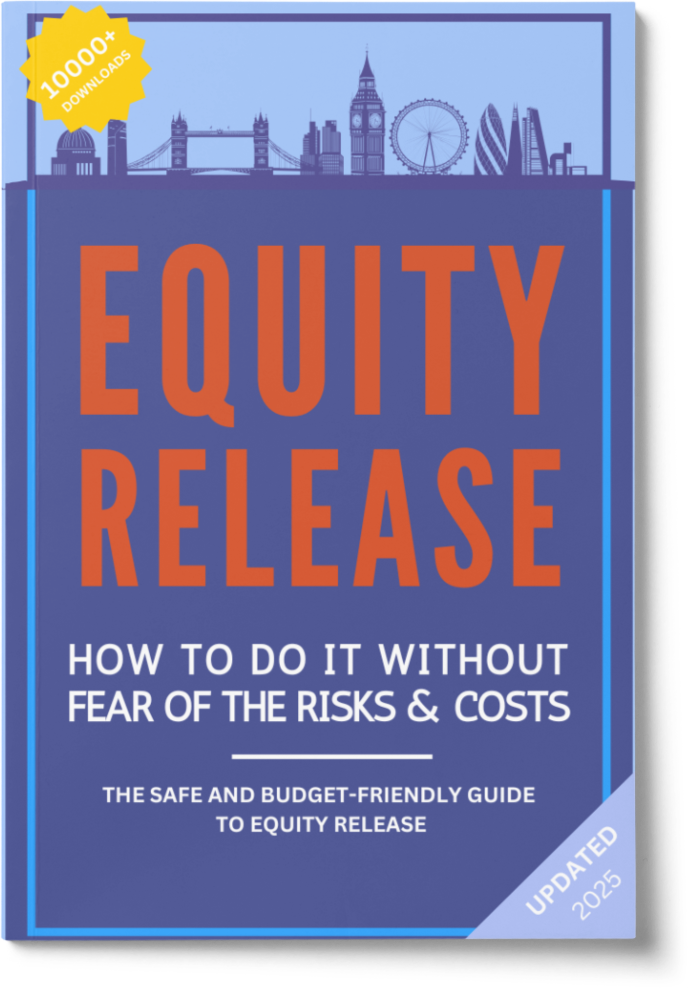How Is Equity Release Calculated in 2025?

SovereignBoss adheres to a stringent code of editorial guidelines, but some articles may feature partner references. Here is an explanation for how we make money.
- The amount you can access through equity release depends on factors such as your age, your home's value, and the interest rate.
- In the UK, the amount accessible is determined by considering the borrower's age, property value, and the interest rate.
- You can estimate the amount you can access by using an online calculator, which requires inputs like your age and property value.
- Typical rates for determining the amount range between 3-7% in the UK, varying with the plan and provider.
- Yes, age plays a crucial role in determining how much you can access, with older homeowners often able to access more.
Are you considering equity release but remain confused by how it is calculated?
Not knowing how to work out how much you may be able to release could lead to wildly unrealistic expectations or the decision not to pursue an opportunity that could be financially beneficial.
Considering over 13,000 new equity release plans were taken out in the 3rd quarter of 20221, knowing how much you could release may have you exploring your options.
In This Article, You Will Discover:
SovereignBoss is a leading information portal for the equity release market.
Our dedicated team has compiled this handy guide on how equity release is calculated.
Therefore...
How Do Work Out How Much You Could Borrow With Equity Release?
You work out how much you could borrow with equity release by determining the loan-to-value (LTV) ratio you can achieve based on three main aspects:
- The value of your home
- Your age.
- The equity release product you choose
Each in a little more detail...
Your Property’s Value
Generally speaking, the greater your property value, the more equity you may be able to release.2
Your property value is how much your home is worth minus any outstanding mortgage or loan that is secured against it.
But how do you work out what your home is worth initially?
Some good tips:
- Review your local housing market and find out how much similar homes have sold for.
- Research the Land Registry3 to see how much nearby properties have sold for.
- Find out what the previous selling price was on your home and use a house pricing calculator4 to estimate what it may be worth now.
- Consult the UK House Price Index5 to find out what the trends are in property markets both local to you and nationally.
Your Age
Your age plays an important role in determining the Loan-to-Value (LTV)6 ratio you can qualify for.
The older you are, the higher your LTV, and the more you could borrow against your home using equity release.
If you are looking to take out a joint equity release plan with your spouse or partner, the calculations will be based on the youngest homeowner’s age.
Equity Release Product
The type of equity product you choose is the next thing to consider when working out how much you could borrow.
There are two types of equity release products, lifetime mortgages and home reversion plans.
With a lifetime mortgage, you take out a loan against the value of your house, and the repayment is not due until you pass away and your house is sold.
A home reversion plan, on the other hand, involves selling a portion of your home for a sum of money below market value whilst retaining the lifelong right to live there.
You may typically be able to release between 20% and 60% of your property’s value with a lifetime mortgage or a home reversion plan.
The actual percentage will depend on your age and your property value.
Lifetime mortgages remain the most popular of the two types of equity release7 largely because they allow you to retain full ownership of your property.
How Do You Calculate the Maximum and Minimum Amount of Equity You Can Release?
When you want to release equity, you probably want to calculate the maximum and minimum amount of equity you can access.
This can be done with an equity release calculator in the UK.
By entering a few pieces of information, such as the approximate value of your home and the age of the youngest homeowner, you can get a good idea of the range that you may be able to release.
An important fact to consider is that some equity release providers impose minimum and maximum8 loan amounts on their products.
For example, the minimum loan a provider may offer could be £15,000 and the maximum £1mln.
How Is Equity Release Interest Calculated?
Equity release interest is calculated on a compounding basis.
The equation for determining compound interest is expressed as: P = C (1 + r/n)nt. In this formula, 'C' represents the initial amount deposited, 'r' signifies the rate of interest, 'n' details the frequency of interest payments, 't' stands for the duration of the investment in years, and 'P' equates to the final total of your investment.
If we assume that the interest is added to your loan on a monthly basis:
During the first month, interest will accrue, then in the second month interest will be calculated on the loan amount plus the interest from the first month.
So unless you make occasional voluntary payments to mitigate the interest build-up, the amount you will accrue interest on will continue to grow monthly.
Step-by-Step Guide to Using Our Equity Release Calculator
Here is a step-by-step guide to our easy to use equity release calculator to obtain an instant, approximate result.
Steps to follow:
- Drag the orange dot to reflect the approximate value of your home and click ‘Start Calculator’.
- Drag the orange dot to reflect your age and click ‘Next”.
- Enter your name and click ‘Next’.
- Enter your phone number for the results to be sent by SMS to you.
- Enter your email address to receive your own copy of our equity release guide.
- The final screen will reveal the approximate amount you could release based on the information you entered.
Understanding the Equity Release Calculator Results
The equity release calculator results should only be used as a guideline, as a number of additional factors could affect the actual amount you could release.
In order to obtain an accurate quote, it is best to work with an equity release advisor or broker.
They will be able to assess your circumstances and your financial goals to determine what products and providers are best suited to your situation.
Top Tip: Make sure you only work with advisors, brokers, and providers who are members of the Equity Release Council.9 This will ensure you are protected throughout the entire process.
Common Questions
What Factors Influence the Calculation of Equity Release?
How is Equity Release Calculated in the UK?
Can I Calculate My Own Equity Release?
What are the Typical Rates for Equity Release Calculation?
Does Age Affect the Calculation of Equity Release?
In Conclusion
There is no doubt that equity release can seem complicated, but it really need not be.
With the right advice and the right plan, be it a lifetime mortgage or a home reversion plan, you could gain access to funds that could ease the stresses of retirement.
Whether you need extra cash to supplement your monthly budget or you want to fund that once-in-a-lifetime holiday, equity release may be a good option depending on your unique circumstances.
Now that you have a better idea of how equity release is calculated, why not contact an equity release advisor or broker for further advice?
WAIT! Before You Start…
Equity Release Calculator
How Much Equity Can You Release?
Spotted a Mistake? Let us know here.




